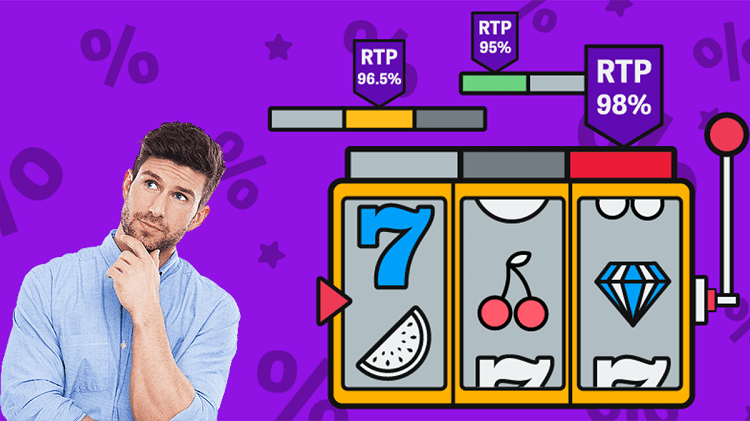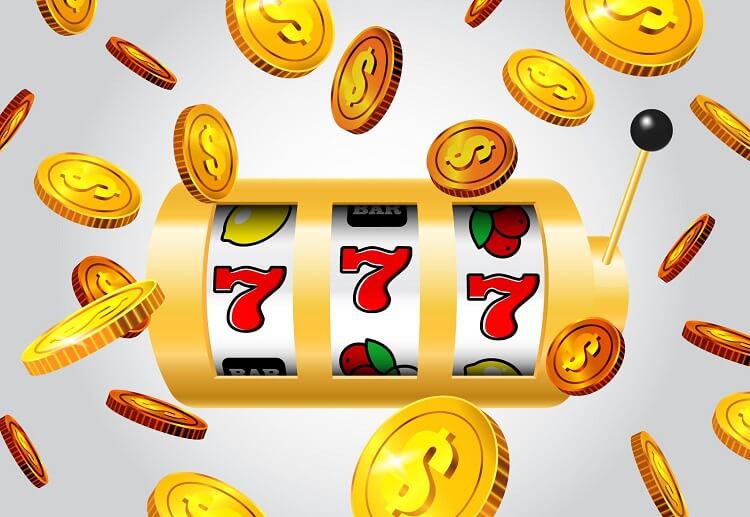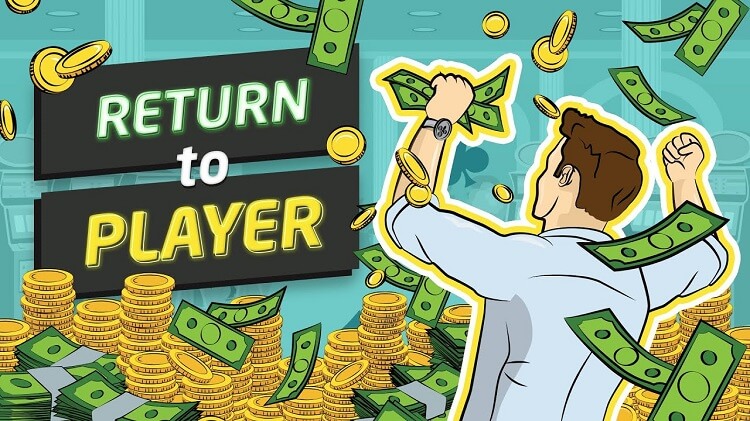Whether as a novice or an experienced player in the world of casinos, when dealing with casino slots, you must have at least once or more times come in touch with the term RTP. This might have perturbed you as to its implications for a player like you.
Being a feature of the utmost cruciality in today’s online gambling, RTP is the abridged form of “return to player.”
To quote the Machiavellian Little Finger, “Knowledge is power.” Also, in gambling, the more you know, the more your winning luck and confidence in your decisions will improve. For this reason, we shall dissect and analyze everything there is to know about RTP for you to make the most of your time at the casino.
RTP: What is its Purpose?
When players stake cash on a particular game, a percentage of the money used to gamble is given back to the gamblers as time passes. This is known as RTP, and RTP can be summarized as cash returned to bettors for a game or casino slot.
RTP can be regarded as contrasting to another concept familiar in the gambling world – house edge. From a statistical point of view, the house edge can be seen as the amount of “upper hand” the casino has in a particular game. It gives the gambling house advantage of winning something every time a player plays a game.
Take, for example, a slot game with an RTP of 85%; the house edge will be pegged at 15%. Why is this meaningful to you as a player? Well, you’re more likely to win a casino slot or game depending on how high the RTP is.
Indeed it’s not a walk in the park. Many folks may assume that, due to a slot’s high RTP, their likelihood of getting all the cash returned is also great. Unfortunately, this isn’t always the outcome.
What will be the theoretical outlook of RTP? Let’s assume you wagered $100 on a game with an 85% RTP; $85 goes back to you, while the house earns the other 15% as profit. For this reason, “the house always wins” is a famous saying. Nonetheless, it doesn’t imply that all gamblers will lose 15% of their stake.
Rather, RTP is summated over an extended time frame – like a month – and over multiple spins. This connotes that a meager amount of gamblers will win massive amounts, another portion will record significant losses, and others will gain or lose moderate cash.
As such, the experience varies from player to player, making the gaming experience unpredictable and thrilling. From our example, however, the wins or losses of an individual are no concern of the house. As said in our example, what stays essential to the house by the close of the period is to gain the pegged 15%.
How is RTP Calculated?
Before getting to the know-how of RTP’s calculations, it is pertinent for you, as a casino player, to be informed about the already preset and preprogrammed status of RTPs. Determining (calculating) the RTP and placing it at a pinpointed value is achieved by the game providers far before the game is even made available to play.
Computers simultaneously execute millions, perhaps billions of algorithms, as the game designers also alter the game’s characteristics until they create the preferred RTP figure. Due to this, the long-term RTP remains static despite the random number generator to ensure that each spin is as lucky as possible.
For casino slots that are operated online, the RTP usually begins at 95%, and a low RTP would be seen as anything below that number. In other scenarios for games like European Roulette, the RTP can be raised to 97%.
You may wonder, thus, why people play slots with lower RTPs when the average is around 95% or more. It’s because some games may have little return to player rates, e.g., Progressive Jackpots.
This occurs due to the probability of a player winning huge, meager, or nothing; this point of view is a risk versus reward. How ambitious you are to win and how much trouble you’re willing to bear matters. It is an issue of preference for most players who like situations where games with a low RTP have a probability of yielding fortunes.
Where Can The RTP of a Game Be Found?
As we’ve showcased, the game’s history is not the basis for which RTP is calculated. To make this calculation, the total amount of money given back to the players is divided by the amount of money the gamblers have wagered result is multiplied by 100. This should give you the RTP percentage. Although it is doubtful that the information needed to carry out such calculations will be provided to you.
But it is good to know that casinos that have been effectively licensed display the RTP for each game on their website for players to go through quickly. After making your stake, choose the casino slot you like, and you might see the information you need. This includes the features, pay lines, publisher, RTP, and features, that are asides from software information.
The casino’s blog is another source to find the RTP. However, this is possible only if it has one. The selected game should be there alongside a review that shows its RTP. If this is unavailable, you can use Google.
The Importance of RTP
The importance of RTP poses a complex question. Those who don’t take gambling seriously don’t need to bother about the cruciality of RTP. On the other hand, serious gamblers who wager massive amounts of cash into gambling as a pseudo-investment to gain profit need to have a keen eye for RTP.
As the case may be, either for leisure or to earn returns, it’s reasonable to know what you’re investing your time and money into.
As a case study, if an online slot showcases a high RTP, the rewards for players in money are pretty available. At the same time, a high RTP does not imply that you will win in a particular round.
The Meaning of Slot Variance And Volatility
Variance or volatility refers to a situation where two games with the same RTP can have payouts that significantly differ. The conflict is placed into three groups known as; high, medium, and low, and each each each of these categories is unique.
Low volatile games pay out small wins but record more common success for players, thus making colossal jackpot wins impossible.
High-volatile games are a sharp contrast to low-volatile ones. They pay out huge wins but have fewer chances of winning.
Medium is the middle ground that doesn’t go far into extremes.
Variance And Volatility in Real Life
A practical example of these concepts can be itemized in the roulette game. Gambling on colors gives you a double bet payout on your winnings but betting on numbers will provide you with 36 times your wager. It can be analyzed that numbers have a high variance and a high risk, while colors have a low friction and a low risk.
Slot games are more complicated due to their additional features, like multipliers and winning combinations. Yet, casino games don’t have average risk, whether the threat is medium, low, or high.
Determining a Game’s Variance
Sadly, unlike RTP, finding a game’s variance is not cheesecake. Information about a game’s conflict can be estimated by looking into the extent to which the pay table is balanced and its added features. The focus of high-variance games is usually placed on bonus features and top prizes. In contrast, the payouts from low-variance games are typically medium or small, and their jewels are scattered.
A game’s demo is also an excellent way to determine whether a match is low or high variance. Not being a bad idea, you can also peruse our casino reviews, where detailed information about RTPs and clashes of casino games are provided for your knowledge.
Making RTP and Variance Favour You: What Needs to be Done
Your newfound knowledge about RTP and variance should improve your game-winning chances, and here’s how you can use this knowledge to edge on:
- To know if the RTP ratio is high or low and understand how the variance works, play demo or free games as often as possible.
- Keep at the back of your mind that low-variance games have small but relatively steady wins.
- Straight or early wins are not to be anticipated in high-variance games.
- Choose high RTP slots. This is better for you, except that you’re playing a progressive jackpot.
- Nothing is guaranteed, and games have no precise winning formula. Ratings and reviews are used only as benchmarks to improve your understanding of the game but are not a straight ticket to winning.
Conclusion
As an online casino player, one essential trump card you need in your arsenal to get a better value for your invested time and money is knowing how RTP percentages work and what they mean for you as a player. However, note that only the house can have a certainty of winning at all times. Knowing the technicalities of variances and RTPs can only help you improve and get ahead, but it doesn’t mean you’ll always win.
FAQ
What Is Meant by RTP?
RTP is an acronym that means “return to player.” It is the percentage of money given back to players from the money they pay to play an online casino or slot game. These percentages are cash returned to the gamblers as a reward or a prize. Depending on their category, various gaming machines give out different tips to players.
How Can I Calculate RTP Myself?
A game’s RTP is calculated by dividing the total amount of money given back to the players by the total amount they have earned for application will be thus:
RTP = total of cash returned to the players / Total amount of money wagered by the players
How is a Good RTP Determined?
What is tagged as a good RTP is one with a high percentage, and this is usually 98% and above. The range for an average RTP is pegged between 95%-98%. Meanwhile, all RTP percentages under 96% are considered low or poor. This is because the loss for the player every time they play such a game will be more than what is considered appropriate.













